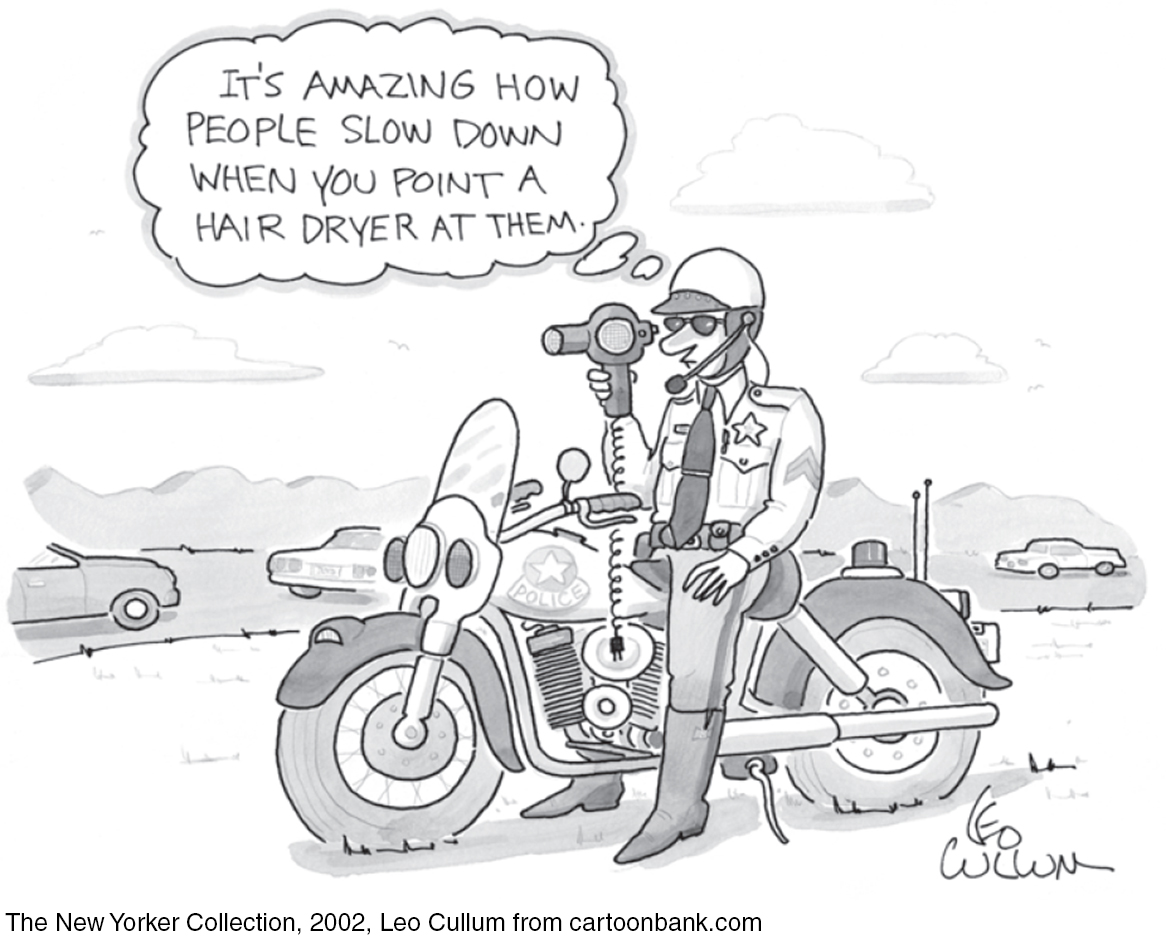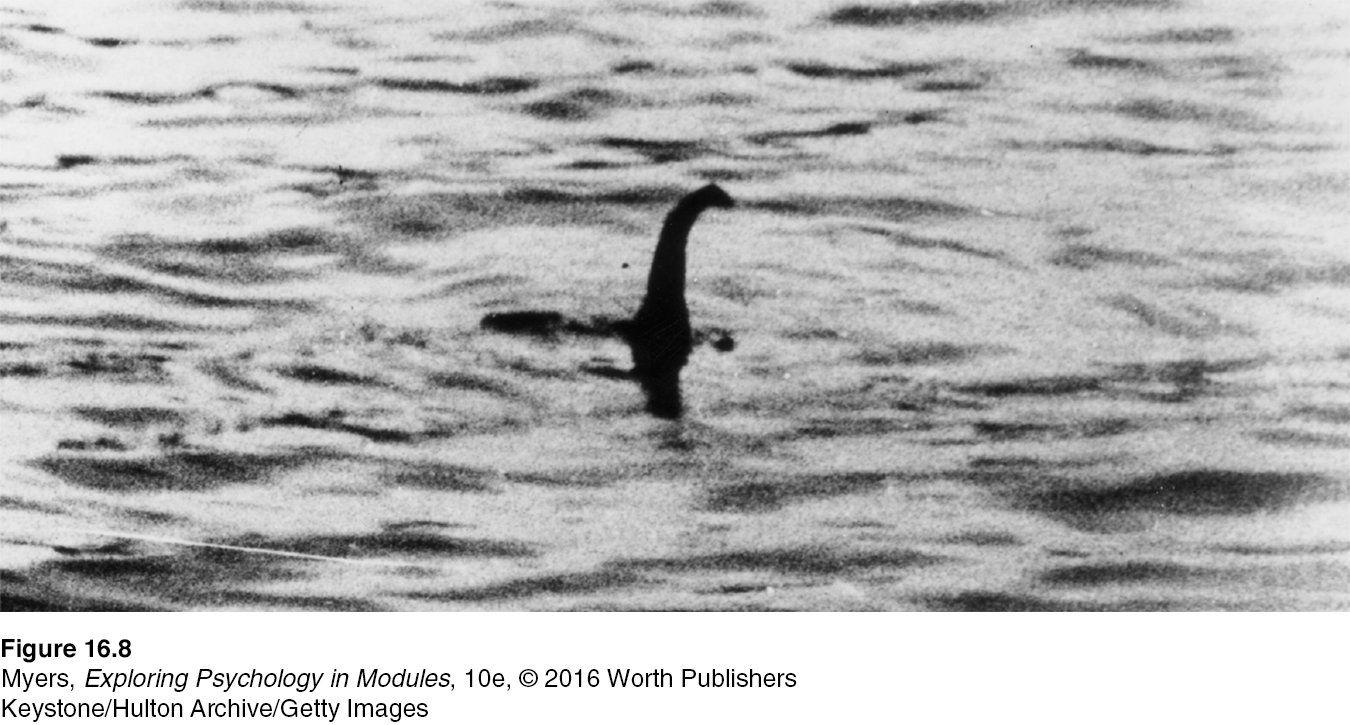16.5 Perceptual Set
16-
perceptual set a mental predisposition to perceive one thing and not another.

To see is to believe. As we less fully appreciate, to believe is to see. Through experience, we come to expect certain results. Those expectations may give us a perceptual set—a set of mental tendencies and assumptions that affects, top-
Consider: Is the center image in FIGURE 16.7 below an old or young woman? What we see in such a drawing can be influenced by first looking at either of the two unambiguous versions (Boring, 1930).
206

There
Are Two
Errors in The
The Title Of
This Book
Book by Robert M. Martin, 2011
In the note above, did you perceive what you expected in this title—
Everyday examples of perceptual set abound. In 1972, a British newspaper published unretouched photographs of a “monster” in Scotland’s Loch Ness—

Perceptual set can also affect what we hear. Consider the kindly airline pilot who, on a takeoff run, looked over at his sad co-
Perceptual set similarly affects taste. One experiment invited bar patrons to sample free beer (Lee et al., 2006). The tasters preferred the brand-
What determines our perceptual set? Through experience we form concepts, or schemas, that organize and interpret unfamiliar information. Our preexisting schemas for monsters and tree branches influence how we apply top-
“We hear and apprehend only what we already half know.”
Henry David Thoreau, Journal, 1860
In everyday life, stereotypes about gender (another instance of perceptual set) can color perception. Without the obvious cues of pink or blue, people will struggle over whether to call the new baby “he” or “she.” But told an infant is “David,” people (especially children) have perceived “him” as bigger and stronger than if the same infant was called “Diana” (Stern & Karraker, 1989). Some differences, it seems, exist merely in the eyes of their beholders.